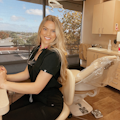Solving the dental hygienist shortage: The case for advanced career pathways
A dental assistant reached out to me, expressing frustration about the process of becoming a dental hygienist in Alabama. She lives in the southern part of the state, yet the only Commission on Dental Accreditation (CODA) programs are located in the north.
Additionally, she mentioned the option of attending the Alabama Dental Hygiene Program (ADHP), which is not accredited by CODA. This lack of accreditation would restrict her ability to practice in other states and require her to seek out a sponsoring dentist in order for her to attend the program.
This sparked my interest, as I had never heard of such a program and wondered how this program remains the only one of its kind in the United States.
Background on the ADHP and student requirements
The ADHP was created more than 50 years ago to help address the shortage of dental hygienists and lack of access to care in the state.1 “In 1959, the state legislature gave the Board authority to issue training permits for qualified dentists to sponsor a dental hygiene student in accordance with a dental hygiene training program (ADHP) established by the Board.”1 Every 10 months the ADHP is able to graduate over 200 dental hygienists.
Students must work as full-time dental assistants with the sponsoring dentist for 24 months prior to entering the program. The ADHP is 10 months and includes on-the-job training provided by the sponsoring dentist and in-person classes one weekend per month. Students are required to complete a minimum of 150 prophylactic procedures. During the program, students can perform hygiene services under a temporary training permit and must have the direct supervision of the sponsoring dentist.1
Graduates from the ADHP do not receive an associate’s degree, are not required to take the National Board Dental Hygiene Examination (NBDHE), and are unable to practice in other states. Instead of the NBDHE, they take the Simulated Patient Treatment Clinical Examination (SPTCE) and the Objective Structured Clinical Examination (OSCE). Recently announced, “The American Council on Education (ACE) Learning Evaluations has evaluated and recommended college credit for the ADHP (17 semester credit hours).”2
The answer to this shortage does not lie in adding scaling to the scope of practice for dental assistants or adopting models like the ADHP. Instead, the solution begins with collaboration between dentists and hygienists to create more autonomy and opportunities for advanced degrees for hygienists.
Comparing dental hygiene salaries
According to DentalPost.com in 2023, dental hygienists in Alabama were the lowest paid in the country, earning an average of $26.56 per hour.3 Some attribute this to the low cost of living, but US News and World Report notes that Arkansas currently has the lowest cost of living in the US,4 with hygienists there earning an average of $35.36 per hour—nearly $10 per hour more than the rate for hygienists in Alabama.3
Solutions for the hygiene shortage
Despite the ADHP having been in existence for more than 50 years and graduating over 200 dental hygienists every 10 months, Alabama continues to have a dental care shortage.4 The issue lies in autonomy. Regardless of the number of dental hygienists graduating, they can only practice where there’s a dentist, and at least five counties in Alabama do not have a dentist.5
Instead of condensing the educational requirements for dental hygienists, states like Alabama should consider adopting advanced education options similar to that of California’s RDHAP (Registered Dental Hygienist in Alternative Practice) or Minnesota’s Dental Therapists.6,7 This would allow for expanded practice opportunities and improve access to dental care in underserved areas.
Currently, in Alabama, there are three CODA-accredited programs: Fortis Institute, Calhoun Community College, and Wallace State Community College.8 Graduates from these programs receive associate’s degrees, take the NBDHE, and are eligible to become licensed in other states. These graduates should have the opportunity to further their education through bachelor’s degree completion programs, dental therapist programs, and/or RDHAP programs.
Collaboration, autonomy, and opportunities
Dental hygienists should pursue educational paths that allow them to expand their scope, increase autonomy, and—most importantly—improve access to care. Advanced degrees and licenses enable hygienists to practice mobile or portable dentistry and even own their own hygiene practices, significantly improving access to dental care. Autonomy encourages dental hygienists to make informed decisions and collaborate more effectively with dentists on treatment plans and patient care. This leads to improved patient outcomes and a more cohesive dental team.
The answer to this shortage does not lie in adding scaling to the scope of practice for dental assistants or adopting models like the ADHP. Instead, the solution begins with collaboration between dentists and hygienists to create greater autonomy and opportunities for advanced degrees for hygienists.
As the public continues to suffer from a dental care shortage and limited access to dental services, it is important for dentists and hygienists to collaborate on finding effective solutions. The public relies on us, as health-care providers, to ensure their safety and deliver comprehensive care. By empowering dental hygienists through advanced education and greater professional independence, we can expand the reach of dental services (particularly in underserved areas) and ensure that patients receive high-quality comprehensive care. This solution strengthens the bridge between interprofessional collaboration and medical-dental integration.
Editor’s note: This article first appeared in Clinical Insights newsletter, a publication of the Endeavor Business Media Dental Group. Read more articles and subscribe.
References
- Alabama Dental Hygiene Program Instructor and Student Program Overview and Information Handbook. Board of Dental Examiners of Alabama. https://dentalboard.org/wp-content/uploads/2023/08/BDEAL-ADHP-Instructor-Student-Handbook-REV-08282023.pdf
- Board of Dental Examiners of Alabama announces the Alabama Dental Hygiene Program (ADHP) recommended for college credit by the American Council on Education. News release. Board of Dental Examiners of Alabama. July 10, 2023. https://dentalboard.org/wp-content/uploads/2023/07/Press-Release.pdf
- 2024 Dental Hygienist Salary Report. DentalPost. https://www.dentalpost.net/salary-survey/what-is-the-average-dental-hygienist-salary/
- Cost of living. Rankings: states with the lowest cost of Living. S. News and World Report. https://www.usnews.com/news/best-states/rankings/opportunity/affordability/cost-living
- Rocha A. At least five Alabama counties lack dentists, says former dental association director. Alabama Reflector. November 13, 2023. https://alabamareflector.com/2023/11/13/at-least-five-alabama-counties-lack-dentists-say s-dental-association-director/
- Glauz Dental hygienist-owned practices: transforming dentistry through prevention. DentistryIQ. January 4, 2024. https://www.dentistryiq.com/dental-hygiene/article/14303156/dental-hygienist-owned-practices-transforming-dentistry-through-prevention
- Dental therapist (DT) and advanced dental therapists (ADT). Minnesota Department of Health. Updated February 12, 2024. https://www.web.health.state.mn.us/facilities/ruralhealth/emerging/dt/index.html
- Search for dental programs. Commission on Dental Accreditation. https://coda.ada.org/find-a-program/search-dental-programs#sort=%40codastatecitysort%20ascending&f:ProgramType=[Dental%20Hygiene
About the Author
Brittany Glauz, BSDH, RDH
Brittany Glauz, BSDH, RDH, has 10 years of experience in the dental field. With three years of clinical practice as a dental hygienist, Britt has become an advocate for hygienists worldwide. As the creator of BrushwithBritt, she uses her knowledge and expertise to educate, empower, and motivate hygienists. She has over 106,000 followers on TikTok, 78,000 followers on Instagram, and a podcast with over 75 episodes. Her roles outside of clinical practice include content creator, writer, speaker, key opinion leader, and advocate. Britt is dedicated to advancing the careers of dental hygienists through interprofessional collaboration and medical-dental integration. Contact her at [email protected].



